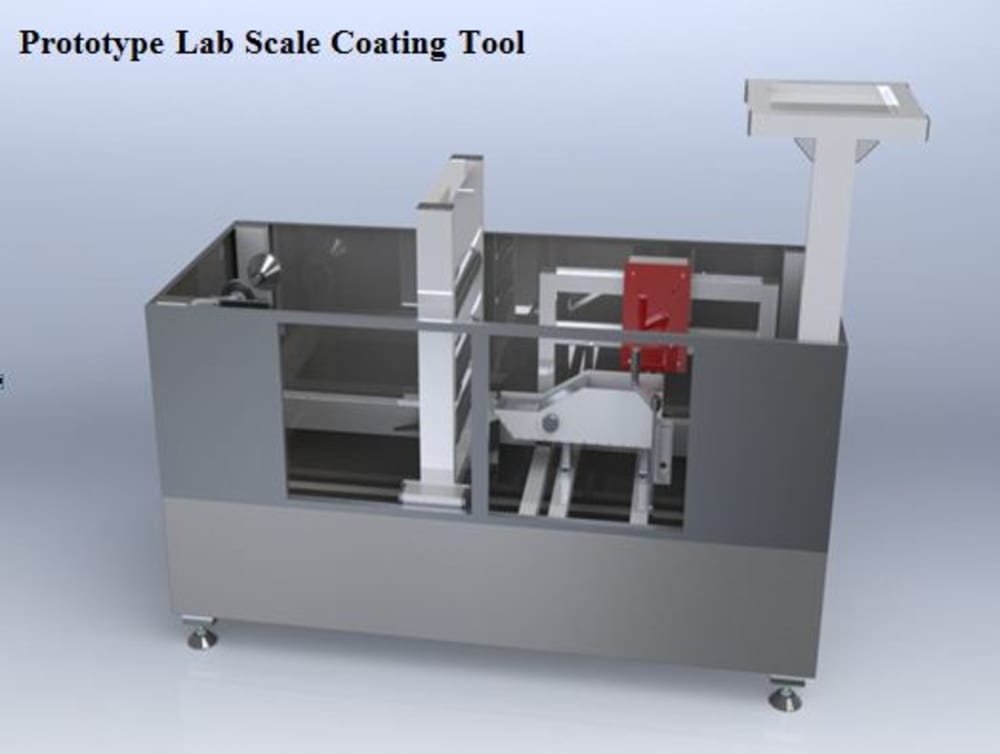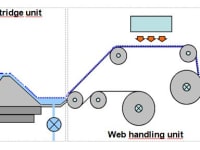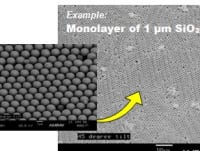
Expensive, new functional materials such as organic semiconductors, semiconducting Quantum Dots (QDs), nanowires and graphene all require deposition of ultra-thin, precise coatings, often as monolayers … but cost effective application of such precise micro- and nano-coatings, to include self-assembly of 2D monolayers of nanoscale particles at high yields and Roll-to-Roll (R2R) rates (e.g. >4 meter/min), is a significant manufacturing challenge across multiple industries. Vacuum processes are expensive, energy intensive, do not readily lend themselves to R2R, and are impractical for thicker layers. Existing R2R processes such as slot die, roll or spray coating are incapable of doing precise monolayers, or ultra-thin, ultra-precise coatings.
We propose a novel coating technology with precise control over uniformity and thickness at ambient pressure and temperature. It can increase energy productivity (output per unit of energy used) impacting existing manufacturing industries while enabling development of new products in emerging industries, such as solar cells (thin film PV, OPV), energy storage (flexible batteries, ultracapacitors), and printed electronics (OTFTs for flex displays and RFIDs).
The material (or particulates) to be deposited are put into a suspension, then dispensed in a precise, controlled manner onto the surface of a carrier liquid of suitable density (e.g. water) on which they “float,” forming a bi-layer. The top layer is then made to self-assemble by inducing the bottom carrier liquid to flow, a function of dispensing and flow rates, surface tension and surfactants. The exact mechanism is as illustrated, consisting of a “cartridge” unit with a ramp between two ponds at different heights containing the carrier fluid which is pumped at a controlled rate to form a closed, recirculating loop, and a web handling unit which passes a moving substrate close to a lip along the edge of the lower pond … the analogy is logs floating in a river self-assembling against a dam.
The flow of the carrier fluid causes a controllable lateral pressure on the top layer which assembles what is floating into a tight configuration on the surface of the ramp, dictated essentially by gravity, the physics of the particles and fluids involved. The assembled layer is then smoothly transferred onto a passing substrate over a colloidal bridge formed along the lip of that lower pond. The coating thickness can be tightly controlled, with high uniformity of deposition.
Unlike slot die coating or other systems, the material to be deposited is not diluted to control thickness, which would then require precise evaporation (drying) of the dilutant to control thickness and uniformity, with a huge footprint in high cost, energy intensive drying ovens. Rather, only incidental traces of the carrier fluid, or of the solvents used to prepare the initial suspensions that had not already evaporated (or settled out into the carrier fluid) need be evaporated.
A prototype, lab scale tool with a 100 mm. web has been built and demonstrated, as illustrated. It can move at 0-5 cm/sec, controllable ± 0.1 mm/sec. A wide variety of materials can be deposited using this process, ranging from ultra-thin polymer thin films
-
Awards
-
 2012 Top 100 Entries
2012 Top 100 Entries
Like this entry?
-
About the Entrant
- Name:George Powch
- Type of entry:teamTeam members:George Powch, VersufleX
Ajay Jain, VersufleX - Software used for this entry:Autodesk
- Patent status:patented








